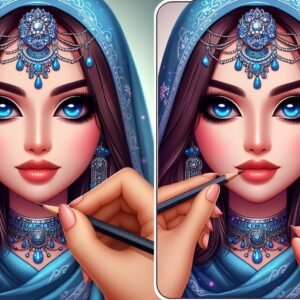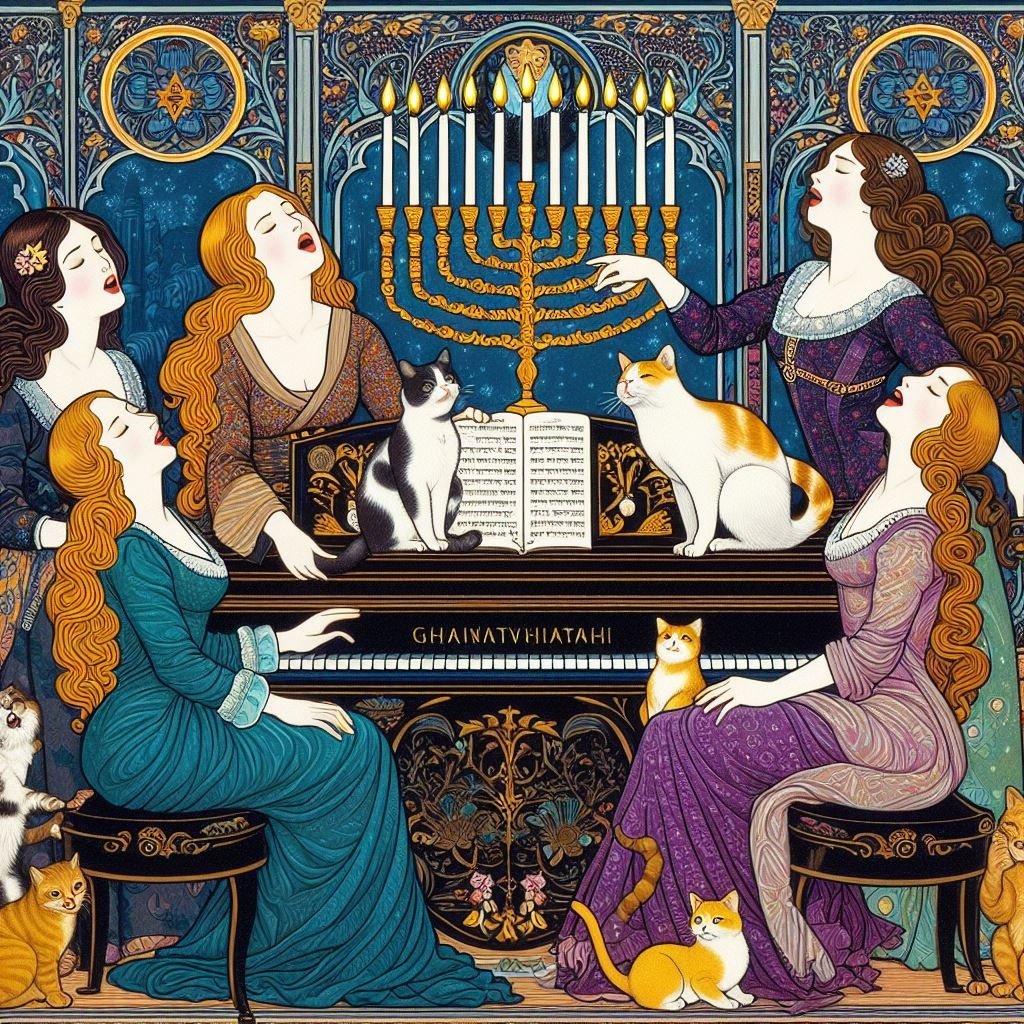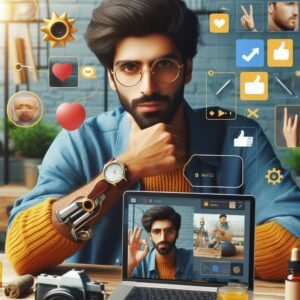Image Creator ( Introduction to Artificial Intelligence )
summary :
-
Introduction to Artificial Intelligence
-
Bing AI Image Creator: An Overview
-
The Power of AI in Image Creator
-
How can I create an Image by using Image Creator
-
Conclusion
In the digital age, visual content plays a crucial role in engaging audiences. With the advent of Artificial Intelligence (AI), the creation of this content has taken a revolutionary turn. One such innovation is Bing’s AI image Creator. This technology harnesses the power of AI to create unique and captivating images, opening up a world of possibilities for digital content creators.
In the realm of technological advancements, Artificial Intelligence (AI) has emerged as a groundbreaking force, reshaping various facets of our lives. One of the most fascinating applications of AI lies in image creation, where algorithms and neural networks collaborate to generate visually stunning and imaginative content. This essay explores the evolution of AI image creation, delving into its inception, development, challenges, and the profound impact it has on the realms of art, design, and innovation.

Bing AI Image Creator: An Overview
Bing’s AI-generated images are the result of advanced machine learning algorithms. These algorithms are trained on vast datasets, enabling them to generate images based on specific prompts. The result is a unique image that is visually appealing and contextually relevant.
Evolution of AI Image Creation Algorithms:
As researchers delved deeper into the potential of AI in generating images, the algorithms evolved to produce more sophisticated and diverse results. The progression from simple GANs to deep convolutional GANs (DCGANs), which incorporate convolutional layers for improved performance, marked a significant stride. Progressive GANs further refined the process by incrementally growing both the generator and discriminator, resulting in high-resolution images.
Variational Autoencoders introduced a different approach, emphasizing the encoding and decoding of images through latent space representations. This divergence in techniques showcased the versatility of AI image creation algorithms, offering artists and designers a spectrum of tools to explore and experiment with.
Challenges in AI Image Creation:
Despite the remarkable advancements, AI image creation faces several challenges. Ethical concerns surrounding the use of AI-generated content, issues of intellectual property, and the potential misuse of this technology for malicious purposes have sparked debates. The lack of interpretability in AI-generated images poses challenges in understanding and controlling the creative process, leading to questions about authorship and accountability.
Another challenge lies in achieving a balance between creativity and control. While AI image creators can generate impressive results, directing the algorithms to align with a specific artistic vision remains a complex task. The challenge is not only in creating realistic and visually appealing images but also in ensuring that the generated content resonates with human emotions and cultural contexts.
The Power of AI in Image Creator

The use of AI in image generation offers several advantages. It allows for creating unique and original content, which is crucial in the digital world where fresh and engaging content is king. Furthermore, AI-generated images can be tailored to specific themes or topics, making them highly versatile for various content needs.
People frequently ask if there is any possibility of making thumbnails free for their YouTube videos
So we want to tell them that now it is possible to make a thumbnail by using artificial intelligence
The Bing Ai image creator is the best example to make or create an image As your exception
The Bing Ai is very responsive.
Transforming Industries:
As we navigate the intricate intersection of technology and art, the ethical considerations surrounding AI image creation become increasingly crucial. Balancing the benefits of accessibility and democratization with the need for responsible development and usage is a delicate task. The future promises a continued collaboration between human creativity and artificial intelligence, opening new frontiers in the ever-evolving canvas of artistic expression
Beyond the realms of art and design, AI image creation is making significant inroads into various industries. In advertising, AI-generated visuals can tailor content to specific target audiences, optimizing engagement and conversion rates. In fashion, AI assists designers in creating unique and trend-setting patterns, revolutionizing the design process. Medical imaging benefits from AI algorithms that enhance diagnostic capabilities, offering clearer and more accurate visualizations.
The entertainment industry, including film and video game production, is leveraging AI image creation to streamline animation processes and enhance visual effects. The ability of AI to generate realistic and immersive environments is reshaping the landscape of virtual and augmented reality experiences.
Ethical Considerations:
The rise of AI image creation prompts a critical examination of ethical considerations. As algorithms gain the ability to mimic human creativity, questions arise about the impact on employment in creative industries. The ethical responsibility of ensuring fair compensation and recognition for both human and AI contributions becomes paramount.
Issues of bias in AI-generated content also demand attention. If trained on biased datasets, AI algorithms can perpetuate and amplify societal prejudices, reinforcing stereotypes in visual representations. Ethical guidelines and transparent practices are essential to mitigate these concerns and foster responsible AI development.
Future Prospects and Challenges:
Looking ahead, the future of AI image creation holds exciting prospects and daunting challenges. Continued research and development are essential to refine algorithms, enhance interpretability, and address ethical concerns. The collaboration between AI and human creativity is likely to evolve, with artists and designers becoming co-creators in a symbiotic relationship with intelligent algorithms.
Advancements in AI image creation may lead to new forms of art and expression, challenging our preconceptions of what is possible. The integration of AI-generated content into everyday life raises questions about the blurring boundaries between the virtual and the real, prompting discussions on the nature of authenticity and its impact on human perception.

1. What is an Image Creator?
An Image Creator or an image generator usually works on the given data.
It has a lot of data to use and create images according to your prompt.
2. What is a Prompt?
The prompt is a text given by you to make or create an image.
Bing’s AI Image creator works based on your prompt.
A prompt is made by your image as realistic as you want.
3. How can I create an Image by using Image Creator?
first of all, you have to go to a browser and type Bing Ai Image Creator
as you enter the query in the search box you will find a link from Microsoft go to the link
https://www.bing.com/images/create
Finally, you have a search box in which put your prompt like
5 women with long hair around the piano, 2 – 3 cats on the piano
here is your output, you will be surprised

Conclusion
Bing’s AI image Creator represents a significant advancement in digital content creation. By leveraging this technology, content creators can enhance their content’s visual appeal and improve their performance.
The evolution of AI image creation stands as a testament to the remarkable progress in artificial intelligence. From its humble beginnings with GANs to the current state of sophisticated algorithms, AI has become a powerful force in reshaping the landscape of visual arts, design, and various industries. While challenges persist, the transformative potential of AI in unleashing creativity and innovation is undeniable.
As we navigate the intricate intersection of technology and art, the ethical considerations surrounding AI image creation become increasingly crucial. Balancing the benefits of accessibility and democratization with the need for responsible development and usage is a delicate task. The future promises a continued collaboration between human creativity and artificial intelligence, opening new frontiers in the ever-evolving canvas of artistic expression.
As we continue to explore the possibilities of AI, it’s clear that this technology will play an increasingly important role in shaping the future of digital content.
The Impact on Art and Design:
The integration of AI image-creation tools into the art and design communities has sparked a wave of innovation and experimentation. Artists and designers are embracing AI as a collaborative tool, pushing the boundaries of traditional creative processes. AI-generated art challenges conventional notions of authorship, inviting discourse on the definition of creativity and the role of human intention in the artistic process.
Moreover, AI image creation has democratized art by providing accessible tools for aspiring creators. The ease of use and versatility of these algorithms enable individuals with varying levels of artistic expertise to engage in the creative process. This democratization fosters a diverse range of voices and perspectives in the art world.



Leave a Reply